Introduction
We can make challenging turkey hunting a fun activity by knowing some secret sauces behind the clean shots. Let’s talk about the main subject of the whole game, i.e., ‘where to shoot a turkey.’ The first thing that bounces in our mind is the vitals of a turkey. This is because they are the main areas to place a blockage in their lung or heart and expire them with an instant hit. A level of knowledge or you can say a brief understanding is required to drag out the mains. It refers to shot placement, which is discussed clearly in this article to give you a gift of clear successful shot along with the ethical duties as a responsible hunter.

What Are Turkey’s Vitals?
It is critical to get to know about their vitals. They are so small that aiming them is a bit challenging task for every hunter. Let us see what these are.
Lungs And Heart
These organs are low as compared to organs of other game birds. Mark their size a little over a softball size. However, they present the most targeted vitals in either strutting or non-strutting bird. These organs lie just above the center of the mass where the final wing connects to their body in a non-strutting bird. While, a bird in a full strutting position, these organs lie just higher and several inches back from the beard if we look from broadside position.
Head
Just like the neck, it is also a challenging vital as it is the most mobile part of a turkey whose movement you can’t predict. Imagine if a ping pong ball size because that can resemble a turkey’s head in a significant way. Here you have to look at the best time to hunt turkey in a moveable head position.
Neck
It is somewhat smaller than a ping pong ball size. Plan to shoot at the spinal column here. You can make an excellent shot at the neck of a turkey. You also have a chance to take out carotid artery and windpipe if you don’t hit the spine.
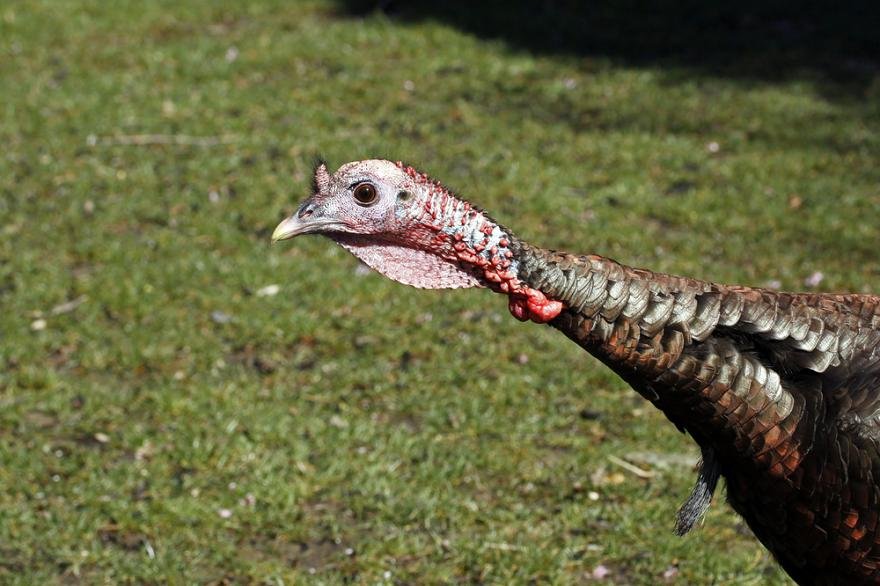
Shot Placement
Depending upon what you are choosing to kill a turkey, there is a little theory behind shot placement. We will be going to discuss them separately in sections namely shot placement with a bow and shot placement with a shotgun respectively.
Shot Placement With A Bow
As compared to a gun, turkey hunting with a bow is slightly tricky. They do not stand still for us hunters, so we have to make out a great shot whether they are facing us or facing away from us. There is a simple rule that if the bird is strutting and facing you, aim just above the beard and let your arrow fly. In contrary, if the bird is strutting facing away from you, then aim at the anal vent and let your arrow fly there. Just like these, below are given different standing positions of a bird and the points to aim at.

Broadside Shots
Broadside shots are considered as the successful shots by most of the hunters. However, it also poses a challenge when the bird is in full strut. When the turkey is in a full strutting position, the wings structure got changed then. You can apply this simple rule in this situation. Just draw a vertical line in front of the bird’s legs. And, from there, aim for the point that will intersect crease of the bird’s wings. That is the approximate location of their heart and lungs.
There is a saying, “Hit him high and watch him die, hit him low and watch him fly.” Aim for the vital slightly than the center of the mass in case of a non-strutting bird. It is the place where the butt of the wing joins the turkey body. Fundamentally, their final wing joint will point to the heart. By following this, your arrow’s broadhead will either break both wings and able to pierce the heart and lung vital or it will hit the spine and break wings only. Well, ready for a follow-up shot in case wings are broken only.
Straight Position Shot When Facing Away
That might sound very good to the hunter when hitting from the back. Right? It will just create a fantastic picture in front of you hunters. In this state, a spine shot will suddenly expire the turkey. This shot is considered a high percentage shot. Well, you have to wait for a bird to stand erect so that you can get a clean spine shot. Because a feeding or walking bird will eventually lead you to a weak target. The spine shot is also considered as one of the best shot even if a bird is in a strutting position facing straight away from you.
As the spine is in a straight line, the base of the strutted wings offers a perfect aiming point. The arrow placed directly into the bird’s vent will pierce well through the chest cavity and sometimes even severe the spine. To set up this shot, you can make use of best decoys for turkey hunting by placing jake decoy 15-20 yards right in front of you. And, make sure that decoy will face towards you as most of the time, the turkey will approach a decoy head on.
Straight Position Shot When Facing Towards
It follows a simple rule that when a turkey is facing towards you either in a strutting or non-strutting position, always aim between the base of the beard and bottom of the neck. The point is about 4-inches below the neck and is usually detected as a thin vertical line formed by the breast feathers.
Quartering Shot
Although quartering shots are hard to hit, you can hit directly either into the bird’s heart and lungs or the spine based on the imaginary lines formed. At first instance of a non-strutting bird, imagine a horizontal line from the base of the bird’s beard and simultaneously imagine a vertical line from the turkey’s offside leg. The points of intersection of these two lines are your aim, which as it will redirect you to the turkey’s vitals, i.e., heart and lungs. In case, if you hit high, the spine may be impacted, which is as equivalent to the former case.
On a second note, if the bird is in full strut position at a quartering shot, then image a horizontal line two inches below the base of the neck in spite of the beard. A slight forward shift is also required in your imaginary vertical line from the offside leg.

Grasp these quick tips when turkey hunting with a bow:
- Aim lower than you think
- Reduce draw weight when you are enough to close to the range so that the arrow will hit the target and doesn’t go straight away.
Shot Placement With A Shotgun
The ideal range for a shotgun is still 20-30 yards even with a combination of high-performance turkey load and full choke combination. But, some serious hunters can hit the shot beyond 60 yards depending upon their expertise. Ammunition that scatters and spreads the softball size head of a turkey will give you the best choice in this case. The aim points are almost similar to that of a bow, but there are certain things which require your attention in case of turkey hunting with a shotgun.
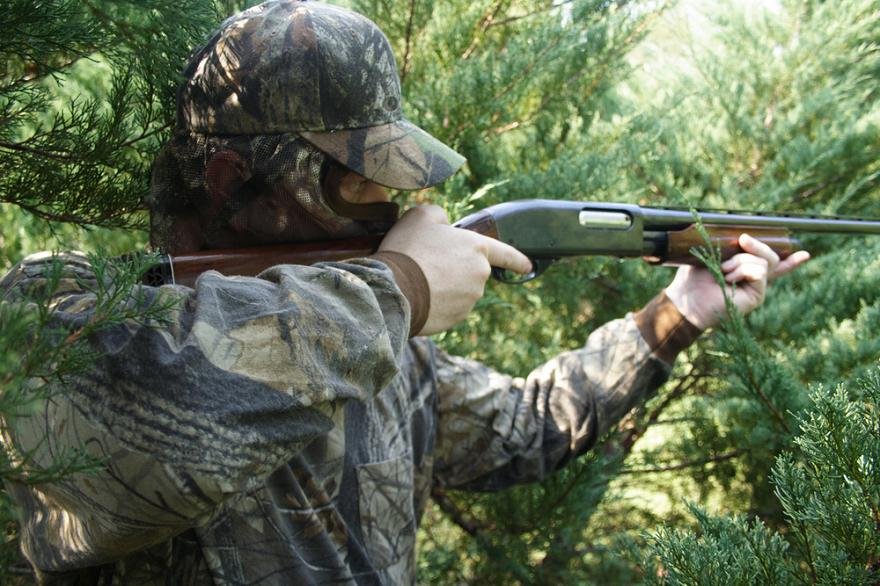
These are as follows:
1. All you have to aim for is the head and neck area of turkey without focusing at its body. The thick feathers around the body will make it hard to aim for the right spot and penetrate the organs.
2. It is advised not to hit the bird in a full strut position except you want to take a chance. Particularly, when the tom is broadside to your location in full strut, the head and neck area are tightly held against its chest, providing more protection to them while blocking your shot at vitals.
3. It is also not an ideal spot to hit at the bird who is too close because it will either create an illusion like an explosion of feathers or you will miss hitting at turkey’s vitals. These type of shots will typically result in more misses as the pattern has yet to open up. Thus, a distance of an ideal range should be there for a clean shot.
For A Super Shot With A Shotgun, follow these quick tips given below:
1. Patterning your shotgun is the foremost step to develop and throw a dense pattern. As you already know that a gobbler has weak points, namely head and neck and collaboration of pellets in these areas guarantee a sure kill. This is why you need an exact shooting gun. Patterning your turkey gun will enable you to impact the same place as was thought because the point of aim is somewhat different from the point of impact. These both ends needs to be sorted out, and it is possible only with a gun patterning. For detailed information on gun patterning, you can head to this article (BEST SHOT SIZE FOR TH).
2. The first ideal part of the aim is the thick and fleshy part of the neck. It is placed at the bottom of the turkey wattles. A portion of this shot will hit both the head and neck region of the turkey. Thus, you should aim at point A.
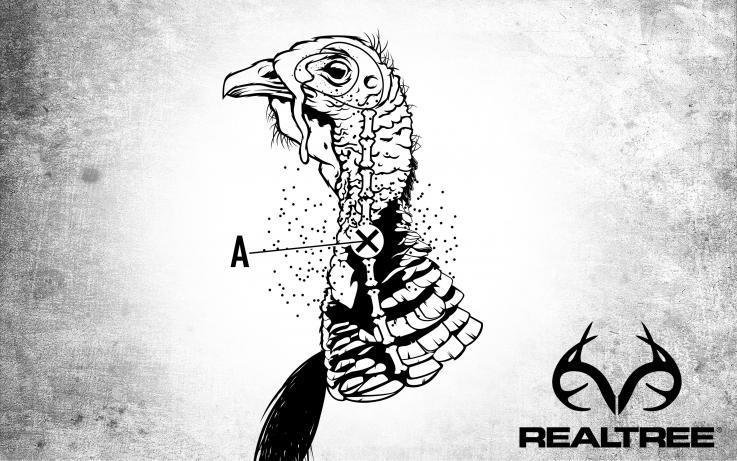
Source: https://www.realtree.com/turkey-blog-with-steve-hickoff/shot-placement-for-turkey-hunting
3. The next best point of aim is the head. However, the pattern of this shot may go up or above the vital areas. To place them in a correct position, remember to try different turkey shotgun loads by setting up targets at different distances. In this way, you will learn the suitability of shotshell with the gun for a clear shot. For that, you should aim at point B.
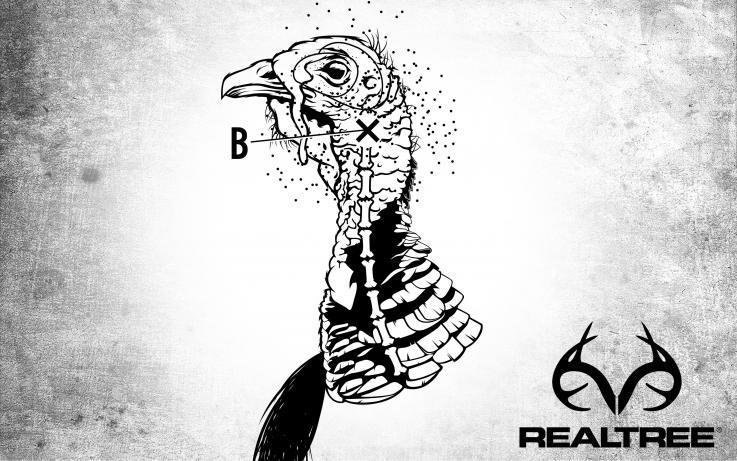
Source: https://www.realtree.com/turkey-blog-with-steve-hickoff/shot-placement-for-turkey-hunting
4. Out in the market, there are available even best turkey calls for beginners which are highly beneficial to pull a bird out of strut. Call until the strutter stops and lifts its head to see from where the noise is coming. As soon as turkey lifts its head, be ready to shoot.
Different Methods Of Shooting
Generally, hunters use a lot of different approaches to killing turkeys. They contain variances depending upon the severity of situation and experience and skills of a hunter. Some of the methods are given below:
Stalking
It means tracking and silently hunting down a bird. A lot of practice is required before you graduate yourself to use it in the hunt. Many hunters who use bowhunting rely on this stalking technique. Stalking is a method of shooting turkeys that require quick activity on the side of hunters. Following their droppings or tracks and considering what time do turkeys roost is all that comes under this technique. Especially if you insist on hunting roost site, then here’s an advice. You will find turkeys on the edges, and sometimes they launch from outside the tree’s branches or from across a gully or draw. Thus, stalking needs an exceptional practice to focus on the shooting points of a turkey.
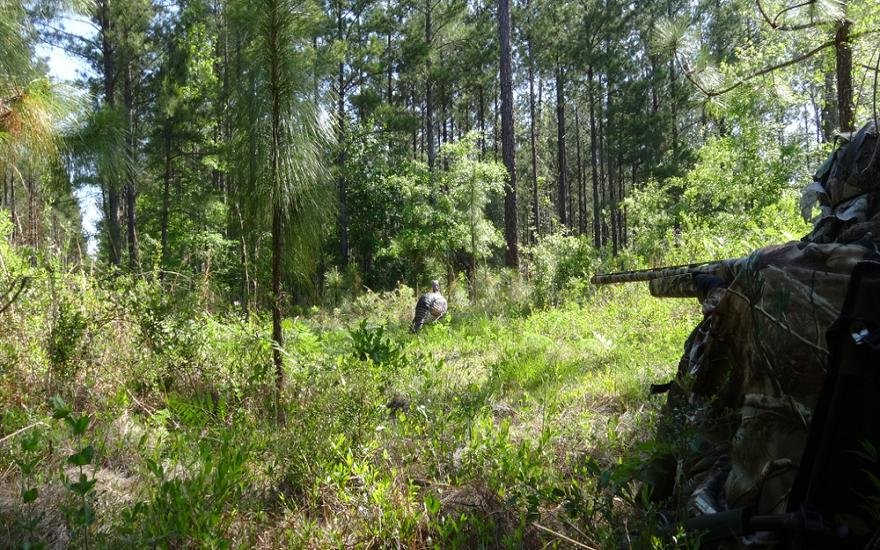
Ground Blinds
Blinds are enclosed camouflaged tent like places to hunt from a hidden area to prevent from turkey’s keen eyes. They are made for the sole purpose of hunting and similar to the small building accompanied by hunters and their essential gears. An adequate ground that matches the hunt surroundings will help the hunters to shoot a turkey even from close distances. Usually, a thin mesh window runs around the blind to see your target.
Tree Stands
If you know how to use a turkey box call that can produce high pitches of sounds, then you are probably aware of the importance of tree stands while using box calls. Although they are not permanent structures, they can provide a brilliant way to camouflage in the environment and increase your chances of grabbing a kill. It is recognized by most of the hunters that box calls are proved to be effective most of the times when you are hunting from tree stands because of their coordinated range with trees and their structures.
Long Range Shoots
A long-range shot is advantageous if you are skilled enough to take this chance. A lot of patients in a hunter and a quality weapon gear is required to rock on. You’ll need a quality shotgun or quality broadhead arrows, best holographic sights and most importantly, a camouflage covering. However, many difficulties arise when you select a shotgun to hunt at long ranges. Thus, those hunters using arrows actively utilize this method.
Ethical Code Of Shooting
Turkey hunting should not be taken for granted. Determining the points of where to shoot a turkey does not mean that you will overlook all other essential responsibilities as a hunter.
An accountable shooter always abides by the general ethics of shooting a bird as follows:
• Always kill a shot that you are sure of hitting. Never hit a shot unless you are sure that it will prove to be fatal. This is because hurting an animal is much worse than an instant kill.
• Have you looked at your state’s hunting regulations? If not, make sure to pay attention at all of the conservation laws or acts in the state you are hunting in so that you will not land up in breaking a variety of requirements and paying a considerable lot of fines.
• As an ethical practice, try to avoid taking any metal or tin cans while out on a hunting practice to sharpen your skills. These small metal shards left behind can have severe aftermaths for the wildlife and the environment as a whole.
• You got a privilege to hunt at pristine lands. Thus, it’s your responsibility to take care of the environment in which you are hunting. Try to make less impact on the environment by never leaving anything behind, picking up all your litter and not damaging any natural flora.
This is the best mix of responsibilities and successful hunting. Can you eat wild turkey? Well, yes you are going to enjoy this delicious meal only if you have tried all your best to shoot them effectively without destroying the meat and fleshy part.
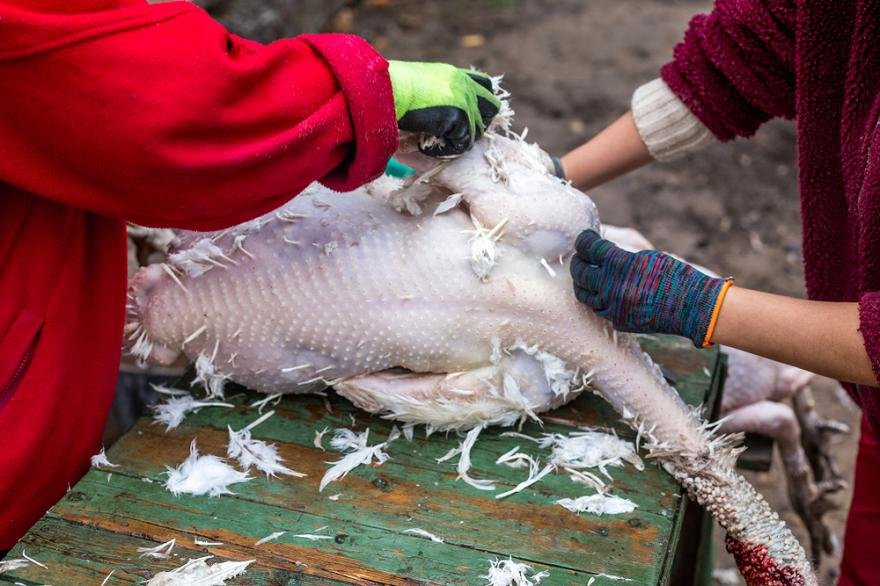
Conclusion
Hopefully, you enjoyed reading! Shot placements are a crucial factor in determining your success. Whether you like to select bow hunting or a shotgun, the point where to shoot a turkey is noteworthy. Various shots at different positions and different shooting methods discussed above will let you know the significance of shot placement. And, yes should be a responsible hunter not overlooking the care of the environment while hunting.
